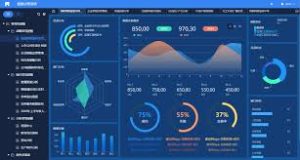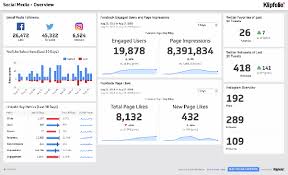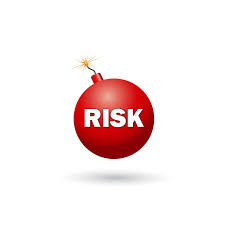The need for real time information
From sports car to aircraft to super tanker, successful operation depends upon the pilot’s understanding and urgent timely use of a dashboard. Real time information is critical to real time decision-making, and increasingly in the modern business world, decisions are made by management without extended meetings or discussion with others.
understanding and urgent timely use of a dashboard. Real time information is critical to real time decision-making, and increasingly in the modern business world, decisions are made by management without extended meetings or discussion with others.
Managers need real time information
And with the rise of modern technology-driven businesses, the same is true of management in the business world. A good dashboard of relevant real time information is now available for most any business, often created by computer software from data derived from monitoring real time tasks within the business.
Consider these critical pieces of information
 You should consider creating such a dashboard or reviewing the one you use if already driving with one at hand. I’ve developed four criteria for use in creating and evaluating your dashboard. When constructing yours, you should consider the following:
You should consider creating such a dashboard or reviewing the one you use if already driving with one at hand. I’ve developed four criteria for use in creating and evaluating your dashboard. When constructing yours, you should consider the following:
- Controllable outcomes: There is no use for information for which there is no ability to control changes as a result of analysis. Ensure that you include only information for which you have a way to alter future outcomes in a positive direction. An example would be a real time display of the value of the dollar against the yen. If your business has no trade with Japan that could be affected by arbitrage, early shipments or other tactics that take advantage of the moving value of these currencies, that statistic is irrelevant to the dashboard – even if interesting to you.
- Earliest warning metrics: [Email readers, continue here…] What good is information if you can’t act upon it in a timely manner? Find metrics that will be “leading indicators” of trouble to come. Think of labor efficiency (future product or service delivery impairment) or warehouse inventory (sales slowdown, supply chain management problems) as examples.
- Items in the critical path (bottlenecks): This is one of my focus issues for my workshops, it is so important. One of your chief duties is to remove bottlenecks in the delivery process for your product or service, enabling all resources before and after the bottleneck to achieve maximum efficiency. If a critical path machine or employee is slow or down, your own email box overflowing with questions from subordinates needing answers, or any other measure of critical path impairment in need of fixing, you should know about it at the earliest possible moment. Add a measure of each that you identify with to your dashboard.
- Items impacting cash (now or later): Cash is the oil of your business. Slowing of production, deliveries, raw materials, receivables collections, billing for work completed – all are going to influence cash flow soon and should be tracked when out of expected range.
Some simple indicators you can track
Simple indicators that affect multiple areas above include increasing backlog, call center  delay time denigration, increases in finished goods inventory amounts, unbalanced work in process inventory buildups, and reduced efficiencies in billed time for consultants or experts.
delay time denigration, increases in finished goods inventory amounts, unbalanced work in process inventory buildups, and reduced efficiencies in billed time for consultants or experts.
And how about projecting cashflow?
How about projecting cash on your dashboard: cash on hand plus expected accounts receivable collections subtracting necessary accounts payable payments and payroll. You will find many more candidates for your personal dashboard. Try to limit yours to five or fewer critical measures that can be updated no less often than daily if not in real time.
You will be steps ahead of most of your competitors and in a much better place to succeed if you create and maintain an effective dashboard.

 tools available for use in the cloud, people are no longer isolated in their creative endeavors. Some label this “crowdsourcing,” a term used to describe one form of this new empowerment.
tools available for use in the cloud, people are no longer isolated in their creative endeavors. Some label this “crowdsourcing,” a term used to describe one form of this new empowerment. management see more clearly their progress and corporate health. The old measures, including return on investment, percentage of profit against revenue or employee count, and more, obviously are still relevant. But businesses that expose their story to tens of millions of potential customers through the Internet need additional tools. Some of these are also applicable to non-Internet businesses.
management see more clearly their progress and corporate health. The old measures, including return on investment, percentage of profit against revenue or employee count, and more, obviously are still relevant. But businesses that expose their story to tens of millions of potential customers through the Internet need additional tools. Some of these are also applicable to non-Internet businesses. Woe to those teaching yesterday’s methods
Woe to those teaching yesterday’s methods instead of merely broadcasting your message again and again in hope that some one remembers it? The answer comes in several forms, but centers around your finding the thought leaders within circles of influence, attracting the “influencers” that people follow. Now companies engage and pay influencers to get your attention and want their products. To do this, your message must resonate in a way that it appears unique.
instead of merely broadcasting your message again and again in hope that some one remembers it? The answer comes in several forms, but centers around your finding the thought leaders within circles of influence, attracting the “influencers” that people follow. Now companies engage and pay influencers to get your attention and want their products. To do this, your message must resonate in a way that it appears unique. of us want to do well for the environment. But most of the time we are willing to do so only if we do well for ourselves when measuring alternative costs. Solar panel installations break even only after over years of use, even with subsidies offered by the electric companies or by the Federal government. And adoption of solar technology for home and business was relatively slow until solar companies began offering systems as rentals with guaranteed returns.
of us want to do well for the environment. But most of the time we are willing to do so only if we do well for ourselves when measuring alternative costs. Solar panel installations break even only after over years of use, even with subsidies offered by the electric companies or by the Federal government. And adoption of solar technology for home and business was relatively slow until solar companies began offering systems as rentals with guaranteed returns. Yes, many people salivate over the latest Tesla; and the sales of the Chevy Volt are surprisingly strong, priced low enough for commuters to calculate that break even is close enough to satisfy the desire to help the environment while enjoying daily savings.
Yes, many people salivate over the latest Tesla; and the sales of the Chevy Volt are surprisingly strong, priced low enough for commuters to calculate that break even is close enough to satisfy the desire to help the environment while enjoying daily savings. and how it affects every productive move you make after that moment. There is amazing leverage in high gross profit margins once a company is past breakeven. Every dollar of gross profit falls to the bottom line, increasing net profit faster with each transaction.
and how it affects every productive move you make after that moment. There is amazing leverage in high gross profit margins once a company is past breakeven. Every dollar of gross profit falls to the bottom line, increasing net profit faster with each transaction. Well, let’s start with direct mail is slow, costly, hard to measure, and impossible to change once the mailer has gone out.
Well, let’s start with direct mail is slow, costly, hard to measure, and impossible to change once the mailer has gone out. competitors by specializing in those smaller accounts that are just not attractive to those with higher overheads and larger aspirations.
competitors by specializing in those smaller accounts that are just not attractive to those with higher overheads and larger aspirations. than being constantly beaten in this arena, the company has chosen to compete in an area of the market it can defend with superior service, which the larger competitors – with their higher cost structure – could not reproduce in smaller accounts without large losses. Further, scaling the enterprise and its infrastructure to go after the few very large accounts would be at the cost of development for the midrange of the market and perhaps subsequent loss of that share to others.
than being constantly beaten in this arena, the company has chosen to compete in an area of the market it can defend with superior service, which the larger competitors – with their higher cost structure – could not reproduce in smaller accounts without large losses. Further, scaling the enterprise and its infrastructure to go after the few very large accounts would be at the cost of development for the midrange of the market and perhaps subsequent loss of that share to others. profit, but to give proper notice that there is something illegal going on within the company that the person cannot accept and must tell someone about. Note that I use the word “illegal” to differentiate the tell-tale from the legitimate whistle-blower. A tell-tale almost always has a motive based upon political or personal gain, with the exception of when there is a perception or the reality of any form of sexual interference or bullying being reported. That’s a subject for a separate discussion, and there are civil penalties as recourse for such proven behavior.
profit, but to give proper notice that there is something illegal going on within the company that the person cannot accept and must tell someone about. Note that I use the word “illegal” to differentiate the tell-tale from the legitimate whistle-blower. A tell-tale almost always has a motive based upon political or personal gain, with the exception of when there is a perception or the reality of any form of sexual interference or bullying being reported. That’s a subject for a separate discussion, and there are civil penalties as recourse for such proven behavior. Some agencies offer cash rewards for whistle-blowers that are in proportion to the amount recaptured by a taxing authority or penalties assessed. Such rewards blur the heroic act into one where personal gain can easily be assumed to be more of a motive for a good deed than brave action. And there are raging arguments from company offices to the halls of Congress about whether a whistle-blower should or must first approach senior management within the company before reporting to authorities. But, no matter what the outcome or how high the reward, that does not change the protection the whistle-blower has under the law.
Some agencies offer cash rewards for whistle-blowers that are in proportion to the amount recaptured by a taxing authority or penalties assessed. Such rewards blur the heroic act into one where personal gain can easily be assumed to be more of a motive for a good deed than brave action. And there are raging arguments from company offices to the halls of Congress about whether a whistle-blower should or must first approach senior management within the company before reporting to authorities. But, no matter what the outcome or how high the reward, that does not change the protection the whistle-blower has under the law. throat nearby, we will assign super cleaning responsibilities and certainly enforce social distancing rules, hand washing and temperature checks. But it is easy to envision some entrepreneurs and senior management wondering whether we go overboard for safety as a balance of cost and labor efficiency. Or does a leader just order a return to the normal we knew only six weeks or so before but with a little extra care for cleanliness?
throat nearby, we will assign super cleaning responsibilities and certainly enforce social distancing rules, hand washing and temperature checks. But it is easy to envision some entrepreneurs and senior management wondering whether we go overboard for safety as a balance of cost and labor efficiency. Or does a leader just order a return to the normal we knew only six weeks or so before but with a little extra care for cleanliness? No company, even the smallest, is immune to safety issues. In this computer keyboard-driven office world, programmers, accounting and office personnel, and many others are exposed to carpel tunnel, back, and leg and neck problems, just by sitting in place. A single cough into a keyboard or worse yet in the kitchen can be deadly in this new environment. And nowadays the risk of injury, worker compensation insurance claim, lost productivity, and lawsuit are only slightly less in the office than on the factory floor.
No company, even the smallest, is immune to safety issues. In this computer keyboard-driven office world, programmers, accounting and office personnel, and many others are exposed to carpel tunnel, back, and leg and neck problems, just by sitting in place. A single cough into a keyboard or worse yet in the kitchen can be deadly in this new environment. And nowadays the risk of injury, worker compensation insurance claim, lost productivity, and lawsuit are only slightly less in the office than on the factory floor. important company top executive? Are you or your board prepared to immediately jump into a pre-planned recovery? From experience on more than forty boards over the years, I can state that few have even considered the possibilities. All of us have a phone listing of our employees and associates. But very few have a phone tree for simultaneous contact of larger numbers of people to marshal a recovery from any type of disaster.
important company top executive? Are you or your board prepared to immediately jump into a pre-planned recovery? From experience on more than forty boards over the years, I can state that few have even considered the possibilities. All of us have a phone listing of our employees and associates. But very few have a phone tree for simultaneous contact of larger numbers of people to marshal a recovery from any type of disaster.